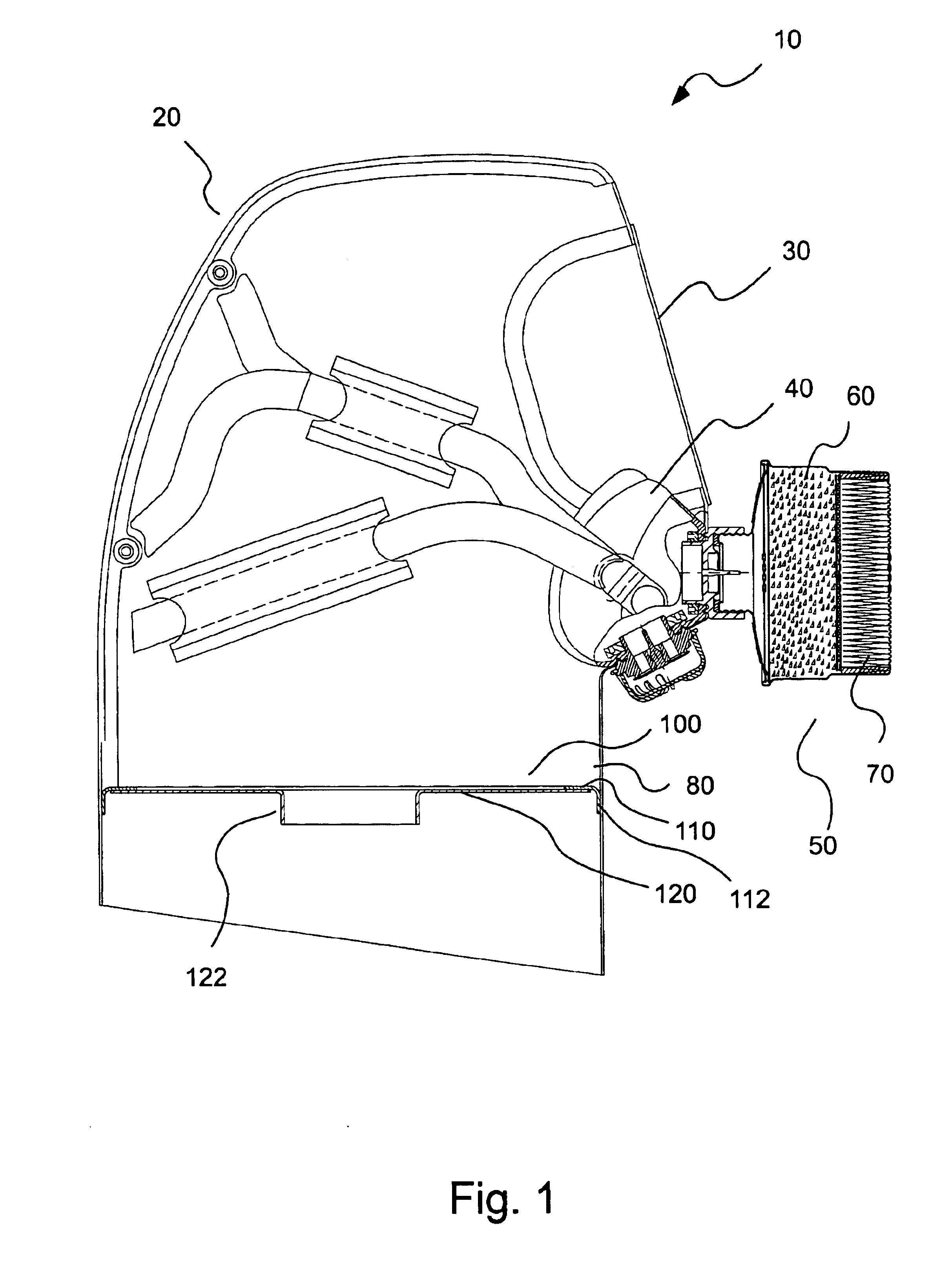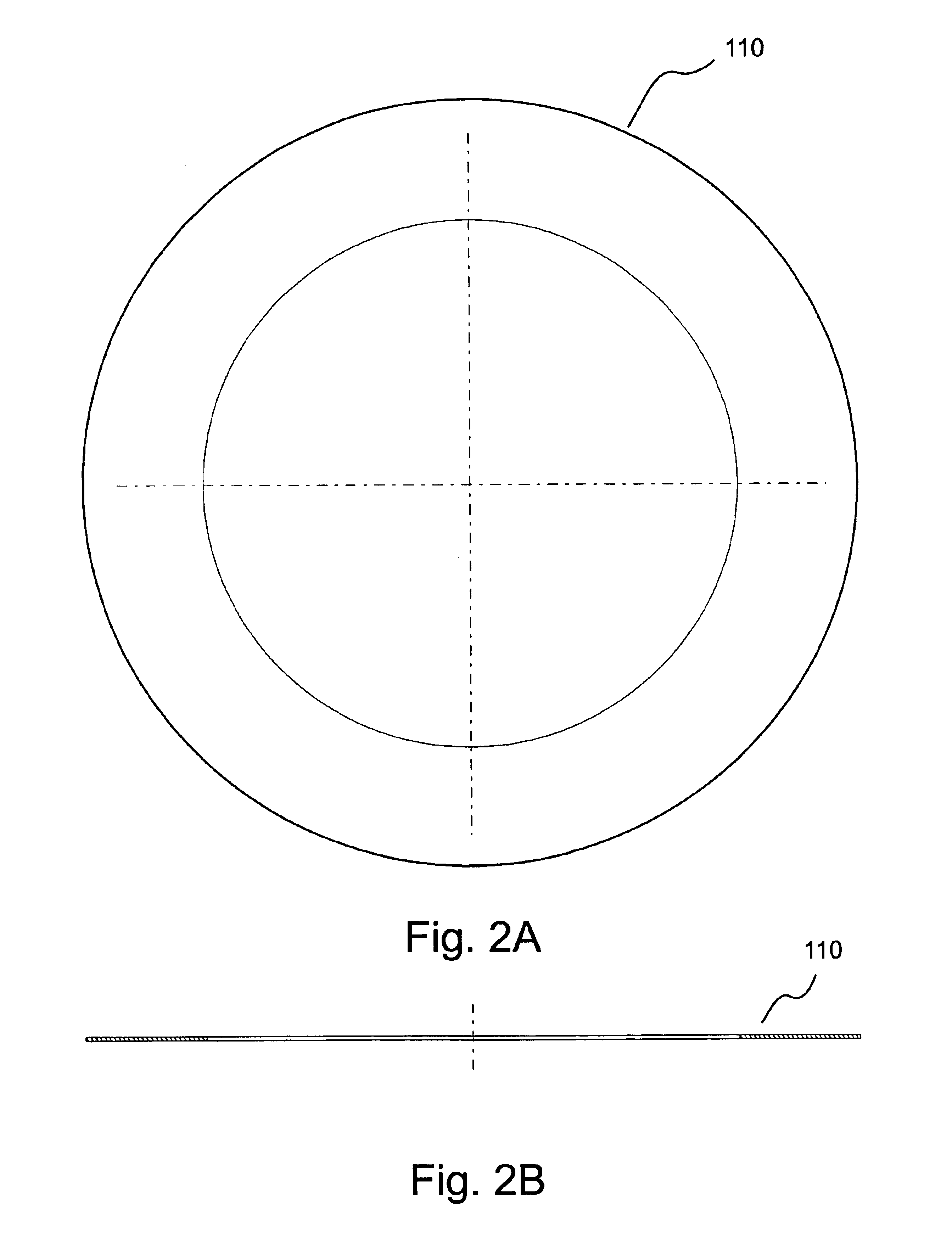Protective hoods and neck seals for use therein
a technology of protective hoods and neck seals, which is applied in the direction of breathing masks, breathing filters, breathing protection, etc., can solve the problems of imposing a serious threat on unprotected individuals, hoods that have not been used for that purpose, and the threat of chemical and biological warfare agents being released into public locations such as office buildings and subway systems, so as to facilitate the user's head and reduce the risk of injury, the effect of high chemical resistan
- Summary
- Abstract
- Description
- Claims
- Application Information
AI Technical Summary
Benefits of technology
Problems solved by technology
Method used
Image
Examples
Embodiment Construction
[0023]Protective hood devices of the present invention preferably exhibit the following characteristics, among others: proper fitting of a cross-section of society; adequate protection when exiting from a potentially toxic environment; unobstructed vision when worn; proper function after storage for extended periods of time; and easy and quick donning.
[0024]The effectiveness of such protective hoods is dependent on a number of factors including the following: the head covering's and lower skirt's resistance to permeation and penetration by toxic agents; the effectiveness of its air-purifying element to remove toxic substances from an inspired airstream; and the ability of the device's neck seal to maintain a proper seal.
[0025]To provide these characteristics, protective hood 10 preferably includes a head covering 20, which is preferably formed from a chemically resistant material such as a three-layer laminate (polyvinylchloride-nylon-polyvinylchloride) that loosely fits over the he...
PUM
 Login to View More
Login to View More Abstract
Description
Claims
Application Information
 Login to View More
Login to View More - R&D
- Intellectual Property
- Life Sciences
- Materials
- Tech Scout
- Unparalleled Data Quality
- Higher Quality Content
- 60% Fewer Hallucinations
Browse by: Latest US Patents, China's latest patents, Technical Efficacy Thesaurus, Application Domain, Technology Topic, Popular Technical Reports.
© 2025 PatSnap. All rights reserved.Legal|Privacy policy|Modern Slavery Act Transparency Statement|Sitemap|About US| Contact US: help@patsnap.com



